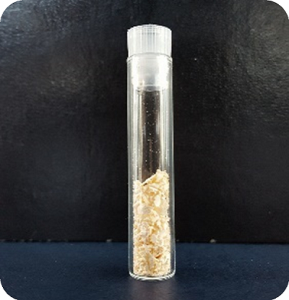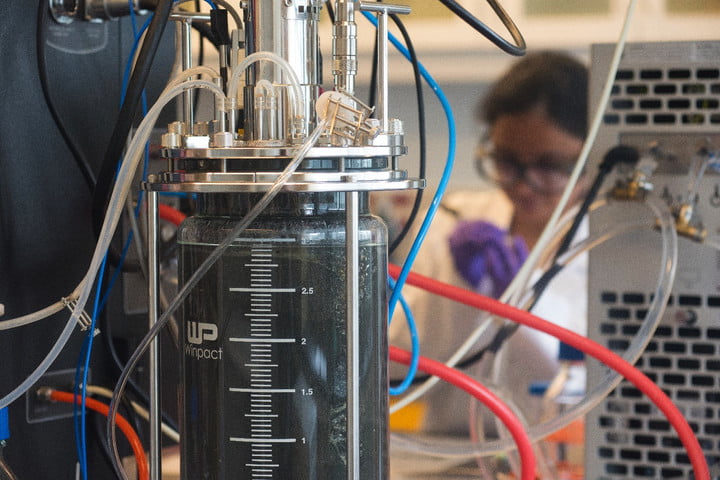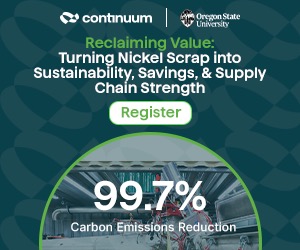Canadian Startup is Turning Food Waste into Biodegradable, Plastic 3D Printing Filament
3D printing is often used in sustainability efforts, such as making tires, prosthetics, and cars from recycled materials, water treatment efforts, and stopping food waste with 3D printed vegetables and other foods. The USDA has estimated that between 30 and 40% of the country’s entire food supply is wasted, and roughly 30% of edible fruit and vegetable crops are rejected for sale in South Africa due to their appearance alone. Some companies are working to achieve 100% use of food products with no waste whatsoever, which could be difficult. But instead of completely halting food waste, others want to use these edible scraps to make something better – recycled materials for 3D printing.
Recycled 3D printing filaments have been made out of all sorts of materials, from plastic and raw building waste materials to fishing nets and even human waste, as gross as that sounds. A group of graduates from the University of Toronto Scarborough in Canada formed a startup called Genecis, and have figured out a way to recycle food waste and turn it into biodegradable plastics, which can then be used to make everything from 3D printing filament to packaging.
“Genecis uses biology to convert organic waste into higher value materials. The first product line is PHA (polyhydroxyalkanoates) biopolymers, which is used in combination with PLA to make 3D printing filaments. It is also used to make high-end flexible packaging and containers. In addition, PHAs makes a tougher and less brittle 3D printing filament. The end product is 100 percent biodegradable, and can be mixed with a variety of colors,” explained Luna Yu, the Founder and CEO of Genecis. “Currently, all PHAs are made from expensive food crops such as corn, sugar cane, and canola. Genecis has developed a novel technology that produces PHAs from mixed food waste, dramatically reducing the production costs.”
PHAs are produced by microorganisms, which the startup modifies by adjusting the bacteria composition. Genecis has what Yu calls “special recipes of bacteria’ at the center of its technology, which can rapidly and automatically assemble materials in such a way that they can later go on to produce more rare chemicals, as well as materials that cost too much to chemically create. Genecis claims that its “PHA bacteria cocktail” can produce PHA bioplastics for 40% less cost than current commercial productions are capable of achieving.
According to the startup’s website, PHAs can be completely composted and molded into products like 3D printing filament. It also degrades within a year in landfills and nature, and is one of the only kinds of bioplastic that, if it does end up somehow being recycling, can be combined with petrol plastics to make resin.“Over the past two years, Genecis has collected bacteria from all around the world, and isolated over 200 species that are not present in any existing database. This allows us to start developing our own synthetic biology platform, which rapidly creates new synthetic bacteria,” Yu said. “These bacteria can be used to make better PHAs for 3D printing, and reprogrammed to make higher value materials used in the cosmetic, pharmaceutical, and nano-materials industries.”
![]() So far, Genecis has processed a total of 1,080 kg of food waste, and is currently working to commercialize its first PHA bioplastic pellet product line. In addition, the Canadian startup is also looking for new partners to act as users of its manufactured polymers. This idea will certainly give you something to think about the next time you’re throwing away that perfectly good, half-eaten salad.
So far, Genecis has processed a total of 1,080 kg of food waste, and is currently working to commercialize its first PHA bioplastic pellet product line. In addition, the Canadian startup is also looking for new partners to act as users of its manufactured polymers. This idea will certainly give you something to think about the next time you’re throwing away that perfectly good, half-eaten salad.
Discuss this story and other 3D printing topics at 3DPrintBoard.com or share your thoughts in the Facebook comments below.
[Source: Digital Trends]Subscribe to Our Email Newsletter
Stay up-to-date on all the latest news from the 3D printing industry and receive information and offers from third party vendors.
Print Services
Upload your 3D Models and get them printed quickly and efficiently.
You May Also Like
AMT Shakes Up 3D Printing Market with Affordable, High-Performance Post-Processing Consumables
Additive Manufacturing Technologies (AMT), a global leader in automated 3D printing post-processing, is launching a new line of consumables that promises to significantly reduce operational costs for additive manufacturing users....
The Bambu Lab 3D Printing Platform… or Trapdoor?
Bambu Lab began as a completely closed 3D printing system, where the printer, software, and materials all functioned well but were exclusively from the company itself. This approach mirrored Formlabs,...
2025 Renault 5 E-Tech Electric Is Latest Car with 3D Printed Accessories
Due to the required numbers, additive manufacturing (AM) has struggled to make significant inroads into vehicle interiors in meaningful numbers—at least as far as public knowledge is concerned. Typically an...
BMW Completes Project to Automate Plastic 3D Printing
After a three-year journey to efficiently scale polymer 3D printed part production, the POLYLINE project has concluded. This endeavor, headquartered at BMW’s Additive Manufacturing Campus, pooled the expertise of EOS,...

































